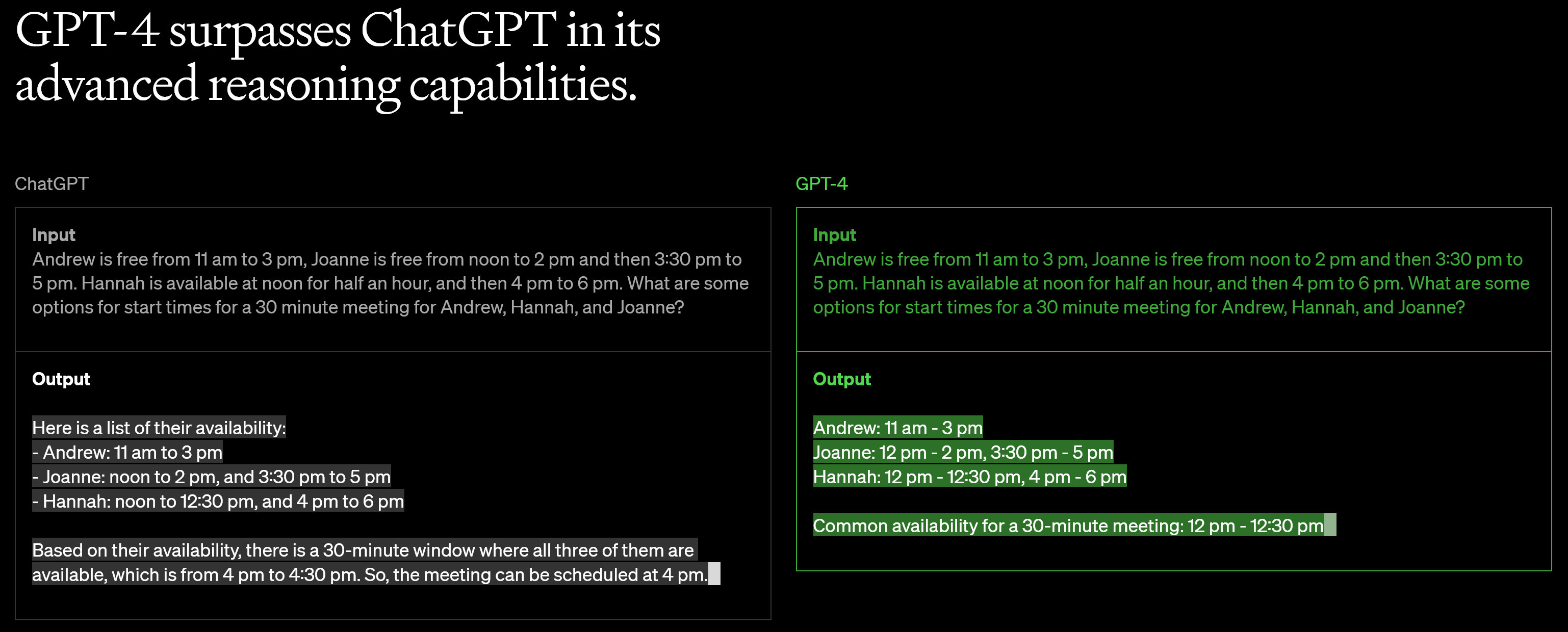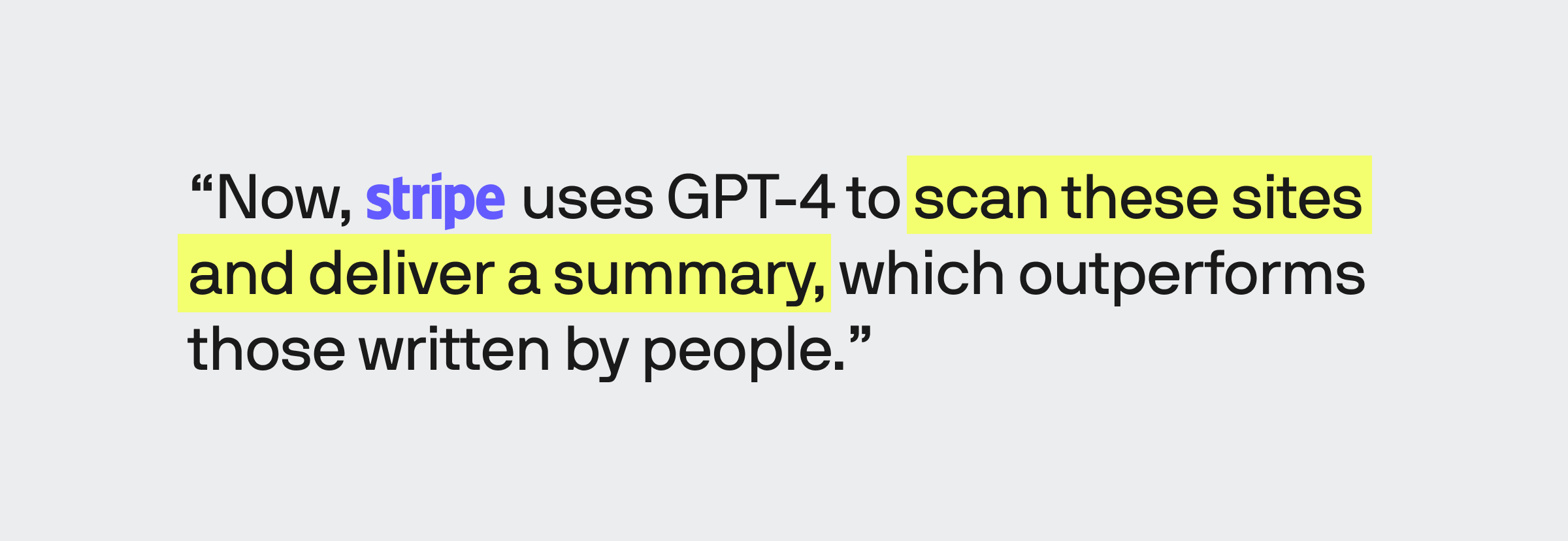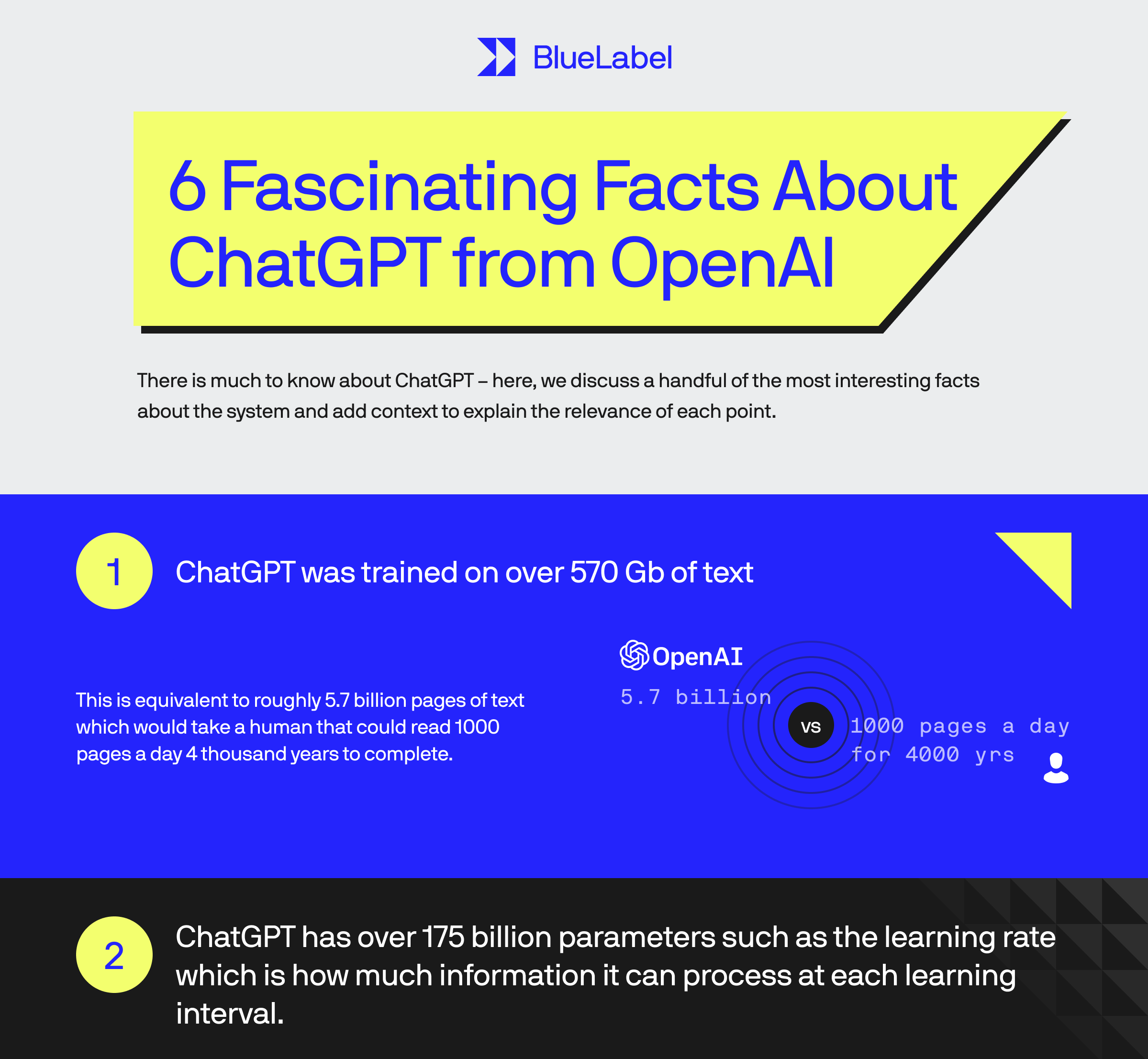How These 4 Companies Are Using GPT-4 to Deliver Next-gen Services
One of the more subtle but fundamental aspects of these new, public-facing AI systems relates to the kind of model that defines the system: GPT-4 may sound much like ChatGPT or Bard, but certain distinctions are essential to understand.
From a business lens, knowing each system’s capabilities will help get the wheels turning for those who want to extend powerful, modern features to their users.
Here, we will highlight some key takeaways from a few case studies published by the folks at OpenAI to demonstrate how GPT-4 can increase engagement.
ChatGPT and GPT-4: a quick comparison
Most professionals who work with (or closely alongside) tech understand that these emerging AI systems operate using specific models that generate structured, conversational output, which has enormous business potential and beyond.
Here’s an infographic from our previous blog, 6 Facts About ChatGPT & Their Significance.
Compared to OpenAI’s other popular platform, ChatGPT, GPT-4 “does more” using similar architecture and training. For example, GPT-4 can accept visual input rather than just text and use more sophisticated reasoning capabilities.
We won’t get into all the gritty details here, but it’s vital to remember that though these systems communicate much like humans, they cannot think and interpret the world around them like us.
Though you might understand this, not everyone does, which can put your users and prospects at risk. Some are already using these systems like a therapist or in place of a friend.
From an ethical standpoint, it is paramount that you’re transparent about how these systems function and the extent of what they’re able to process, especially when using such a system in place (or to supplement) a human role.
A look at the highlights from GPT-4 case studies
Businesses and enthusiasts are already adopting sophisticated AI tools to perform tasks that were previously too complex or information-dense to otherwise process. Here, we’ll quickly examine how these four businesses use GPT-4.
Duolingo uses GPT-4 to power new features
Once you get past “thinking about” learning a new language, a language-learning app like Duolingo might be the way to go.

ばか ☹
More conversational options open up on Duolingo after you’ve progressed beyond learning basic vocabulary. Initially, the people at Duolingo tried to create scripted conversations with GPT-3, but this came across as a bit too mechanical.
Now with GPT-4, the system provides a much more conversational method through a new service called Duolingo Max for learning French or Spanish from English. This system can now thoroughly review user responses and provide detailed feedback, which should help dedicated users reach proficiency much faster.
Morgan Stanley uses GPT-4 to offer a knowledge base that actually works
Most knowledge bases are not that great – you know this because you’ve almost certainly had to use a search engine like Google instead of a site’s built-in search feature, only to wind up on Reddit.

We’re aware of the irony in using a blog to discuss why Reddit is among the best places to find info.
The wealth management industry is a beast that must continually factor in complex relationships to analyze what are often multiple, non-linear trends to best advise their clientele.
Morgan Stanley trained a chatbot based on GPT-4 with decades-worth of information that helps validate and consolidate helpful information to provide insights for financial advisors.
Tools like this can help businesses provide information like FAQs and other informational resources that can get accurate information to people quickly, with less of a need to search the web to find information on third-party forums.
Using a similar method can eliminate the need to constantly update internal resources, for example, after design changes make a support article obsolete or when policies change.
Stripe is using GPT-4 to help support feature development
Some problems AI excels at solving like those rooted in logic – with a deep learning approach, systems like GPT-4 can use additional context for select, real-world problem-solving.

This is a basic example of its reasoning capabilities. | Source: OpenAI
Keeping track of layers of conditions to solve multi-faceted problems is one area where systems like GPT-4 and even ChatGPT provide substantial capacity.
Aside from resolving scheduling conflicts, this kind of reasoning can be used in other areas like helping solve technical problems, such as those related to building-out new features.
Stripe has been doing just this with GPT-4: they refined a system to vet and test 50 different ideas, where 15 of the resulting prototypes were strongly considered for integration into the platform.
Stripe also uses GPT-4 to help combat fraud by reviewing multiple data points for legitimate and unscrupulous business operations with little to no digital presence.

The government of Iceland uses GPT-4 to help preserve language & culture
Iceland has a unique way of dealing with occurring changes in language that naturally occur as we collectively gain more knowledge.

Who wouldn’t want to preserve everything Iceland? | Source: OpenAI
Every language deals with foreign words and jargon differently, but Iceland uses a novel approach to prevent its language from adopting too many unnatural words.
Curating further development of the Icelandic language to keep it relevant and spoken as the country’s primary language while preserving its Old Norse roots is a tall order.
To solve these ongoing, complex challenges, Iceland’s Language Planning Department uses GPT-4 to catalog and preserve the language, an effort that’s yielding additional benefits as a byproduct. This effort is helping improve accuracy in AI translations between Icelandic and other languages while increasing the language’s footprint on digital platforms.
With these efforts (and others) combined, Iceland’s language is becoming more accessible, thus increasing the likelihood that the language will remain a staple for generations to come.
See what AI can do for you
New developments with GPT-4 and other systems are exciting but require much attention to pull off amazing feats like the ones we covered above. Get in touch to learn more about implementing AI into your product.










